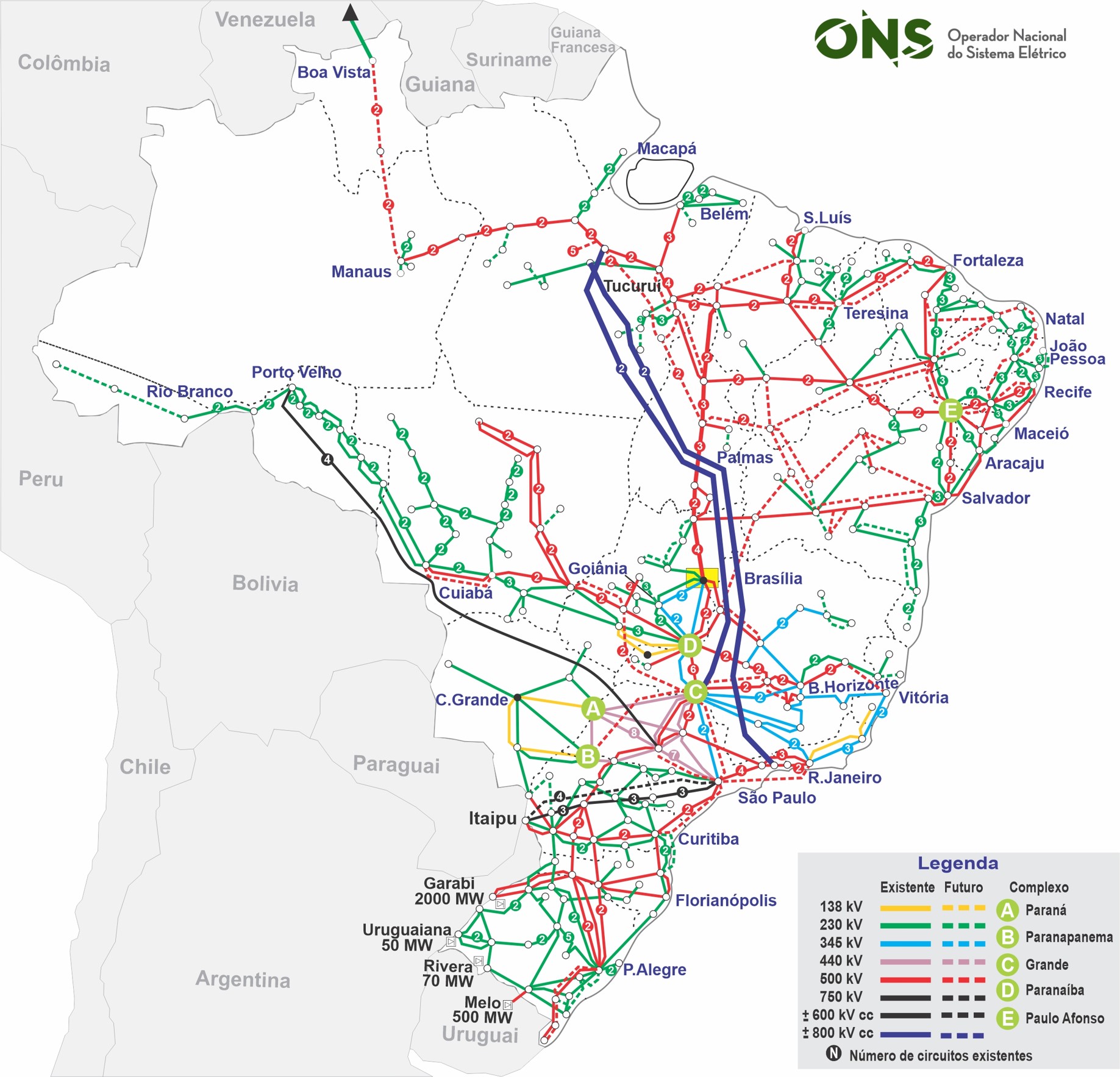The National Interconnected System (SIN) is a large-size system of electric power generation and transmission, operated by companies of public and private nature, managed by the National Electric System Operator (ONS). This system is responsible for serving about 99.9% of the Brazilian electricity market and the extension of its grid reaches approximately 185 km of lines with voltage greater than or equal to 230kV.
ONS is composed of associate members and participating members, who are the generation, transmission and distribution companies, free consumers, importers, and exporters of energy. The Ministry on Mines and Energy (MME) and representatives of Consumer Councils also participate on it.
In order to exercise its legal attributions and fulfill its institutional mission, ONS develops a series of studies and actions carried out on the system and its proprietary agents to manage the different energy sources and the transmission grid, in order to guarantee the security of the continuous power supply throughout the country, with the objectives of:
(a) promoting the optimization of the electroenergetic system operation, aiming at the lowest cost for the system, observing the technical standards and the reliability criteria established in the Network Proceedings approved by the Brazilian Electricity Regulatory Agency (ANEEL);
(b) ensuring that all electrical sector agents have access to the transmission grid in a non-discriminatory manner; and
(c) contributing, according to the nature of its activities, so that the expansion of the SIN is made at the lowest cost and aining at the best future operating conditions.
The Transmission Service Agreement (CPST – Contrato de Prestação do Serviço de Transmissão) is concluded between ONS and the concessionaires of public transmission service. It establishes the technical and commercial terms and conditions for the provision of transmission services. In it, the transmission concessionaires assume responsibility for the operation and maintenance of the transmission facilities and receive Annual Permitted Revenues (RAP) for the availability of these facilities, being discounted for any observed unavailability. Through this instrument, the transmission agents authorize ONS to perform all the necessary acts on their behalf before the users of the transmission grid in the Agreements of Usage of the Transmission System (CUST – Contratos de Uso do Sistema de Transmissão).
The transmission assets that form this grid are regulated by the Brazilian Electricity Regulatory Agency (ANEEL), which in turn regulates this sector through a Revenue Cap model. According to this model, the companies that operate the assets receive revenues based on line availability and not based on volume of energy transmitted in the system. Therefore, the transmission sector is not exposed to volume risk.
We believe that the management of ONS supported by the regulatory model adopted by ANEEL has made the transmission market in Brazil evolve in a safe and consistent manner. TAESA has never suffered significant losses due to lack of payment from its customers, which confirms its positioning in a stable and reliable regulatory framework.
It is worth mentioning that all TAESA’s concessions are part of the SIN.


